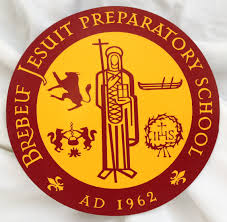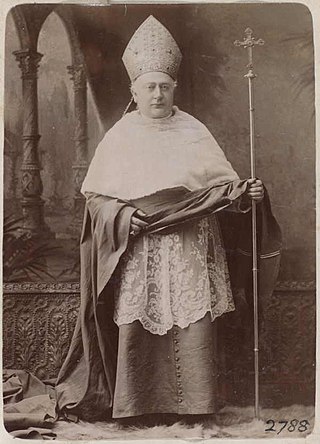
Monash University is a public research university based in Melbourne, Victoria, Australia. Named after World War I general Sir John Monash, it was founded in 1958 and is the second oldest university in the state. The university has a number of campuses, four of which are in Victoria, one in Malaysia and another one in Indonesia. Monash also has a research and teaching centre in Prato, Italy, a graduate research school in Mumbai, India and graduate schools in Suzhou, China and Tangerang, Indonesia. Courses are also delivered at other locations, including South Africa.

Heythrop College, University of London, was a constituent college of the University of London between 1971 and 2018, last located in Kensington Square, London. It comprised the university's specialist faculties of philosophy and theology with social sciences, offering undergraduate and postgraduate degree courses and five specialist institutes and centres to promote research.
Raimond "Rai" Gaita is a German-born Australian philosopher and writer, best known for his 1998 biography about his early life, titled Romulus, My Father. He was foundation professor of philosophy at the Australian Catholic University, and professor of moral philosophy at King's College London.

Daniel Patrick Mannix was an Irish-born Australian Catholic bishop. Mannix was the Archbishop of Melbourne for 46 years and one of the most influential public figures in 20th-century Australia.

Brebeuf Jesuit Preparatory School is a Jesuit college-preparatory school on the northwest side of Indianapolis. Founded in 1962, the school is named in honor of Jean de Brébeuf, a French saint from the 17th century. Brebeuf Jesuit is part of the Midwest Province of the Society of Jesus and is rooted in the Ignatian tradition. The school is geographically located within the Archdiocese of Indianapolis.

St. Paul's College is a Catholic college on the Fort Garry campus of the University of Manitoba in Winnipeg, Mantioba, Canada. It was founded in 1926 by the Missionary Oblates of Mary Immaculate and became affiliated with the University of Manitoba in 1931.

The Catholic University of Ireland was a private Catholic university in Dublin, Ireland. It was founded in 1851 following the Synod of Thurles in 1850, and in response to the Queen's University of Ireland and its associated colleges which were nondenominational; Cardinal Cullen had previously forbidden Catholics from attending these "godless colleges".

Thomas Joseph Carr was the second Roman Catholic archbishop of Melbourne, Australia.

St Mary's College is a medium-sized Roman Catholic co-educational residential college affiliated with the University of Melbourne. Founded in 1918, St Mary's was the first Roman Catholic residential college for women at an Australian university. From its humble origins of just ten students, the college is today home to approximately 160 undergraduate and several postgraduate students during the university year.

Giovanni Panico was an Italian cardinal of the Catholic Church. He served as nuncio to several countries during his career, and was created a cardinal in 1962.
Peter John L'Estrange, AO is an Australian Jesuit priest and historian. He was the Master of Campion Hall at the University of Oxford in England from 2006 to 2008.
Cecil Anthony John Coady, more commonly publishing as C. A. J. Coady and less formally known as Tony Coady, is a prominent Australian philosopher with an international reputation for his research, particularly in epistemology but also in political and applied philosophy. Coady's best-known work relates to the epistemological problems posed by testimony, most fully expounded in his book Testimony: a Philosophical Study. It was influential in establishing a new branch of inquiry within the field of epistemology. He is also well known for his publications on issues related to political violence. Coady is a regular commentator in the Australian media on philosophical aspects of public affairs.
There are eleven residential colleges of the University of Queensland.

The Irish College at Salamanca,, was endowed by the King of Spain and dedicated as the St Patrick's Royal College for Irish Noblemen. It was founded by Thomas White, formerly of Clonmel, Ireland, in 1592 to house the students of that country who came to Salamanca to escape the religious persecution of the Catholic Church in Ireland. The students resided at the college while attending lectures at the University of Salamanca.
Professor Sandra Rees is an Honorary Professorial Fellow in the Department of Anatomy and Neuroscience at the University of Melbourne. Her major research interests have been directed towards understanding the pathogenesis of brain injury resulting from fetal hypoxia, infection, alcohol exposure, growth restriction and prematurity.

Albert Power SJ was a Roman Catholic Jesuit priest, academic and author. He was considered to be one of the best-known Jesuit priests in Australia and had the nickname "The Mighty Atom".
The Reverend William Hackett SJ was an Irish priest, noted for his involvement in nationalist politics in Ireland, and in the educational and intellectual life of Melbourne as Rector of Xavier College and the founder of the city's Central Catholic Library.

Mannix Library is an academic theological library located in East Melbourne, Australia. The library specialises in the areas of theology, philosophy, biblical studies and associated disciplines, and supports teaching and research at Catholic Theological College and the wider University of Divinity. The student body includes candidates for ordination, lay men and women, undergraduate, postgraduate and higher degree by research students, and members of the general public. The library uses OCLC's World Share Management System.

Catholic Theological College (CTC) is one of the constituent theological colleges of the University of Divinity, an Australian collegiate university of specialisation in divinity. The college is located in East Melbourne, Victoria.
Aquinas College on Montefiore Hill, at Palmer Place, North Adelaide, is a residential college providing accommodation and support for Roman Catholic students at one or other of Adelaide's universities: University of Adelaide, Flinders University and the University of South Australia. The centrepiece of the establishment is "Montefiore", once the residence of Sir Samuel Way and (later) his family.





















